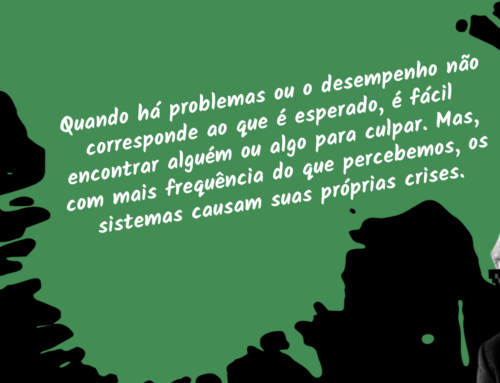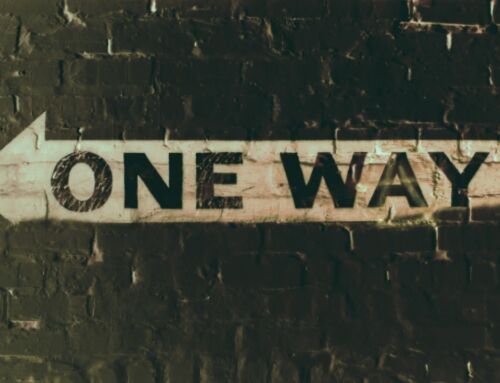In our work with organizations, we often make choices when proposing interventions or experiments that are repeated or have something similar. These simple, recurring strategies are called heuristics. I cannot deny their existence, but before describing them I need to make an academic preamble.
The field of studies on how human beings make decisions began to undergo a transformation process in the 1950s, when the polymath Herbert Simon coined terms such as Bounded Rationality and Satisficing. Such propositions have shaken the confidence in Rational Choice Theory (RCT), hitherto preferred by economists who dreamed of human beings making choices to maximize advantages and balance costs and benefits (that homo economicus that never existed).
A few years later, the articles and seminal work by Tversky and Kahneman, which served as the starting point for other Nobel Prizes, described a human being who made recurrent and almost irresponsible use of cognitive biases and shortcuts. In the famous bestseller Fast and Slow Kahneman cites a “prominent German psychologist” who made persistent criticisms of the work and theories presented in the book.
Gerd Gigerenzer is the name of the German who defends the use of heuristics and proposes something he calls Ecological Rationality (inspired by Simon’s Limited Rationality). It arises when we use the adaptive toolbox of the mind for a particular situation, in this way simple strategies and heuristics stand out when exploring trusted patterns of the world.
Heuristics are not good or bad, “biased” or “unbiased” in and of themselves, but only in relation to the environment in which they are used. In our case, we are dealing with environments or contexts that arise at work as change agents and organizational designers.
Here, I can begin to list the heuristics that have emerged over the last five years of Target Teal helping hundreds of organizations.
Make workflows more visible
When work is intangible and done by many people, with sequential or reciprocal dependency relationships, the flow of activities that generate value may not be visible to all involved.
For those who have more power and influence, this opacity is usually beneficial. It generates ambiguity that is taken advantage of with the famous “portfolios” that make it an extremely urgent task for reasons that cannot be questioned. Opacity makes it easy to bypass the “no prioritization” that drives the amount of what we call work-in-progress (WIP) to infinity.
Visibility can be uncomfortable, but sunlight is often a great disinfectant.
Promote the use of explicit agreements
Following a similar line, we realize that scaled (more than 4 people) and asynchronous (in different times and places) collaboration depends on explicit agreements and not just conversations and verbal arrangements made while having a coffee.
The traumas experienced by people who have suffered in large, slow-moving companies make some people afraid to write down, on paper, agreements about expectations and authority. The tragedy is complete when some people exploit the ambiguity left by the lack of agreements to manipulate or use the office to continue living like a spoiled child.
Good explicit agreements (it’s no use thinking any agreement is good) create the conditions to reduce ambiguity and collaborate in a more fluid way.
Critically evaluate every management “best practice”
Almost every practice we see out there has a place where it makes sense. Where it solves more problems than it creates. However, a common bias is to confuse popularity with effectiveness. Often, “best practices” are only good in very specific contexts, and the problems they cause are ignored because they do not have a direct and simple causal relationship or because they are late, months or years away from being adopted.
The search for and identification of these anti-patterns has accompanied our work since the beginning. A powerful intervention is often just to stop doing that. In some cases, it may mean finding other practices, but in others, just “not doing” is enough. Here’s an example, why not stop doing performance reviews using nine box?
Make use of rituals to change habits
The presence and influence of rituals in organizations is often underestimated. Regular team meetings, performance evaluations, integration moments, employee termination and celebrations are just a few examples.
Rituals have a functional and at the same time symbolic character. A ritual, therefore, mediates between individual actions, beliefs and social norms, bringing together potentially opposing forces within the community (Islam, 2009).
Creating, altering or abolishing a ritual are powerful interventions that we frequently propose in our work. We often propose the use of interaction scripts, as in O2 social technology.
Don’t fall into the fallacy of Gi Joe
When we identify behaviors and beliefs that need to change, we need to avoid the fallacy of GI Joe, an 80’s cartoon that ended each episode with the phrase: “Now you know, and knowing is half the battle.” Unfortunately this is usually not true.
Many of our everyday actions cannot be changed just with the knowledge that they need to change. The environment and context need to help. If nothing around me changes, the challenge can be much greater or even impossible.
Another way to understand this phenomenon is through the difference between Chris Argyris’ theory-in-use and theory-proclaimed. In addition to altering incentives and “contextual cues”, a good solution is to imagine interventions that offer experiences that can help people identify the inconsistencies that exist between their two theories of action and practice new strategies that materialize their proclaimed theories.
Take care of the relational field to allow work in the organizational field and vice versa
In an organization we experience an “umwelt”, the environment and its surroundings . However, we found in our work that this environment that we experience can also be divided into two fields, the organizational and the relational (a didactic division, more than anything else). The organizational is where we deal with tasks, projects, organizational structure, etc. The relational is where we find ourselves as human beings, where we feel and deal with our most fundamental affections, emotions and needs.
It’s a division made to facilitate the design of interventions, so don’t try to classify each experience that way in your day-to-day routine. However, an intervention that can work very well in the relational field can be a disaster in dealing with tensions in the organizational field. Identifying this is very important.
Another key thing is to recognize the interdependence between these fields. By not taking care of the organizational field, we stress the relational field, by not taking care of the relational field, we do not create a solid foundation of trust and empathy so that the organizational field remains healthy.
Create conditions for people to solve their own tensions
Every person in an organization feels tensions. In organizations that use and abuse the chain of command, it is common over time for some people to become insensitive and highly disengaged. Either they stop feeling tensions or they give up on dealing with them. Along with this, the person does not recognize himself in the final product of his work, this is what Marx called alienation.
Structuring an organization without relying on the chain of command seems far from the reality of many, despite being our daily challenge. Working with self-management is fundamentally about creating spaces for people to deal with their tensions. And this can involve distributing authority through agreements and creating rituals that strengthen this principle.
Other conditions may be necessary for people to deal with their own tensions. Identifying them and working tirelessly to create them is an important heuristic.
Reverse the fundamental attribution error
This is a heuristic to avoid designing interventions that focus exclusively on changing individual attributes. The fundamental attribution error describes the tendency we have to attribute faults or deviations in the behavior of others to their individual characteristics and not to the context in which they are.
Here we prefer to reverse and err on the other side. We force things to assign the behavior to the context. If we make a mistake, and we are going to make a mistake, our mistake will be to the opposite side. That is why we do not like interventions that seek to assess or change the individual, as if the problem were concentrated in individual attributes.
Don’t worry about a shared future vision
There is a popular belief that for an organization to work, people need to share the same vision. For us, this would be almost equivalent to saying that people need to feel the same tensions. Which would be unreasonable. Of course, on some fuzzy, ultra-mega level, visions of the future can look similar. But when we deal with what is around us, we are imagining very different futures. And this diversity of views is not necessarily a problem.
Investing a huge amount of time and energy into describing purpose and building vision statements is not our thing. We prefer to put energy into dealing with the tensions that arise in our relationship with the present. And in this gradual and continuous process, a direction is being built. This is what we propose for many organizations. Talking about the future is good and even fun. We just can’t pass up the present.
How to use heuristics
I doubt whether these heuristics I have described here can be used without the accumulation of the experiences that formed them. I suspect that there is something beyond reading and studying. Perhaps the heuristics I’ve described are like Rorschach’s inkblots, and it’s up to you to infer whatever meaning you want.
Even so, the effort to describe them is not useless, as it points out possible ways for you to experiment and build your own heuristics. I’m not simply proposing the use of shortcuts, but the development of a flair or a talent, an instinct that can help you understand and design interventions in organizations. Good luck and if you need help, we’re here.
Translated by Tanya Stergiou
References
GIGERENZER, Gerd; SELTEN, Reinhard (Ed.). Bounded rationality: The adaptive toolbox. MIT press, 2002.
TVERSKY, Amos; KAHNEMAN, Daniel. Judgment under uncertainty: Heuristics and biases. science, v. 185, n. 4157, p. 1124-1131, 1974.
GIGERENZER, Gerd. Gut feelings: The intelligence of the unconscious. Penguin, 2007.
ISLAM, Gazi; ZYPHUR, Michael J. Rituals in organizations: A review and expansion of current theory. Group & Organization Management, v. 34, n. 1, p. 114-139, 2009.
LEE, Michael Y.; MAZMANIAN, Melissa; PERLOW, Leslie. Fostering positive relational dynamics: The power of spaces and interaction scripts. Academy of Management Journal, v. 63, n. 1, p. 96-123, 2020.
ARGYRIS, Chris. Theories of action that inhibit individual learning. American Psychologist, v. 31, n. 9, p. 638, 1976.
MALLE, Bertram F. The actor-observer asymmetry in attribution: A (surprising) meta-analysis. Psychological bulletin, v. 132, n. 6, p. 895, 2006






Leave A Comment